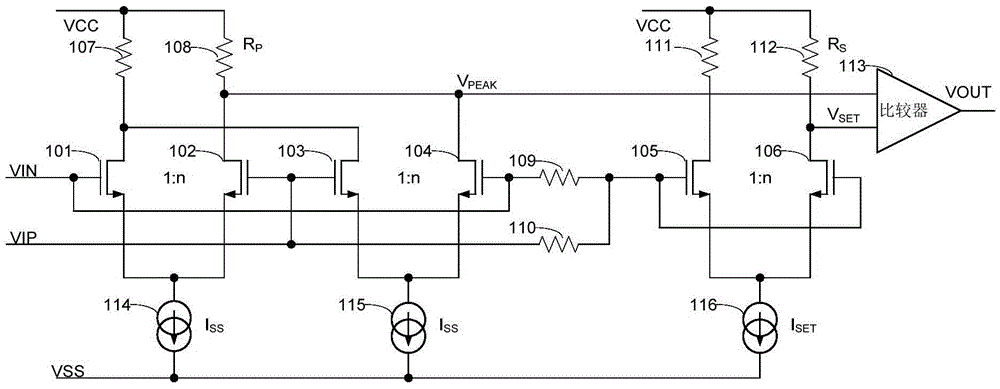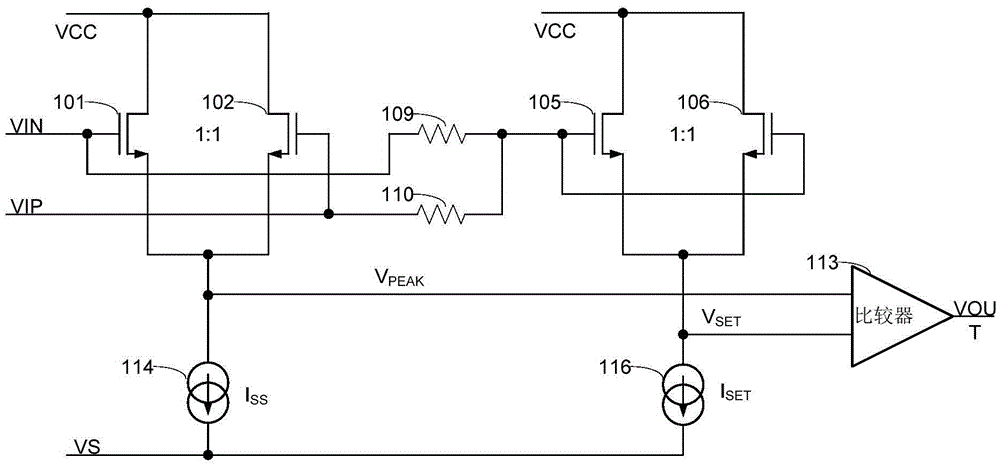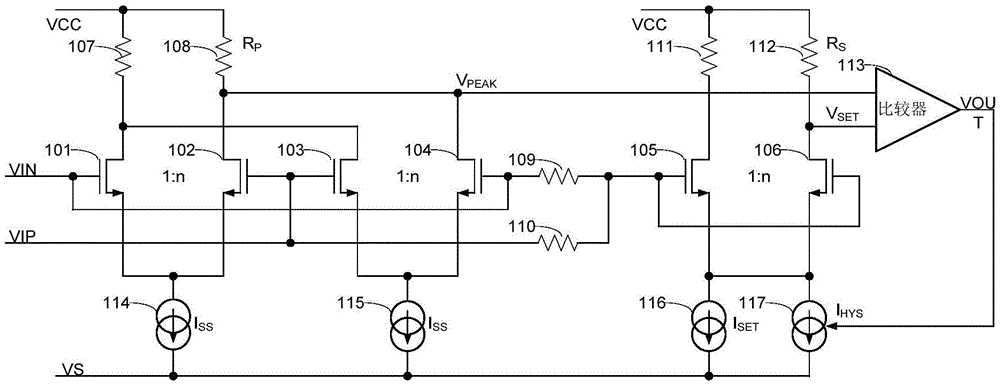Differential signal amplitude detection circuit
A technology of amplitude detection and differential signal, which is applied in the field of differential signal amplitude detection circuit, can solve the problems of inability to perform differential small signal detection, single-ended output amplitude cannot follow differential input signal amplitude, and low conversion efficiency of differential signal amplitude detection circuit, etc.
- Summary
- Abstract
- Description
- Claims
- Application Information
AI Technical Summary
Problems solved by technology
Method used
Image
Examples
Embodiment Construction
[0048] The invention converts the differential input signal into a single-ended non-polarity output signal by using two groups of asymmetric common-emitter or common-source circuits in parallel, and at the same time amplifies the signal so that the single-ended output amplitude can follow the differential input signal amplitude, and even higher, so normal amplitude detection is also possible in differential small signal mode. The present invention can be implemented on a CMOS (Complementary Metal Oxide Semiconductor, Complementary Metal Oxide Semiconductor) process or a BiCMOS (Bipolar CMOS, a technology in which CMOS and bipolar devices are simultaneously integrated on the same chip) process.
[0049] The present invention will be described in detail below in conjunction with the accompanying drawings and specific embodiments.
[0050] Such as figure 1 As shown, it is a differential signal amplitude detection circuit diagram provided by Embodiment 1 of the present invention,...
PUM
 Login to View More
Login to View More Abstract
Description
Claims
Application Information
 Login to View More
Login to View More - R&D Engineer
- R&D Manager
- IP Professional
- Industry Leading Data Capabilities
- Powerful AI technology
- Patent DNA Extraction
Browse by: Latest US Patents, China's latest patents, Technical Efficacy Thesaurus, Application Domain, Technology Topic, Popular Technical Reports.
© 2024 PatSnap. All rights reserved.Legal|Privacy policy|Modern Slavery Act Transparency Statement|Sitemap|About US| Contact US: help@patsnap.com










